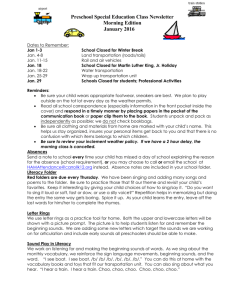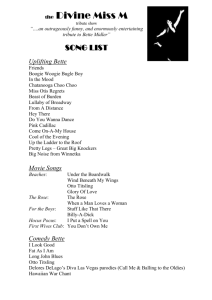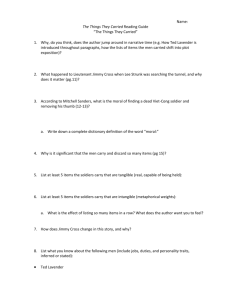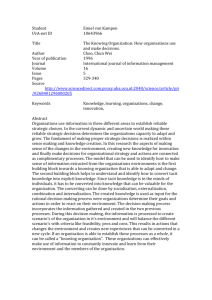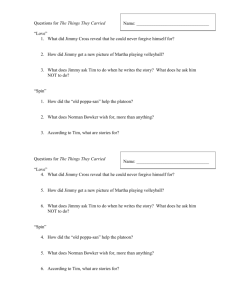choo247adessay - The Space Between My Peers
advertisement
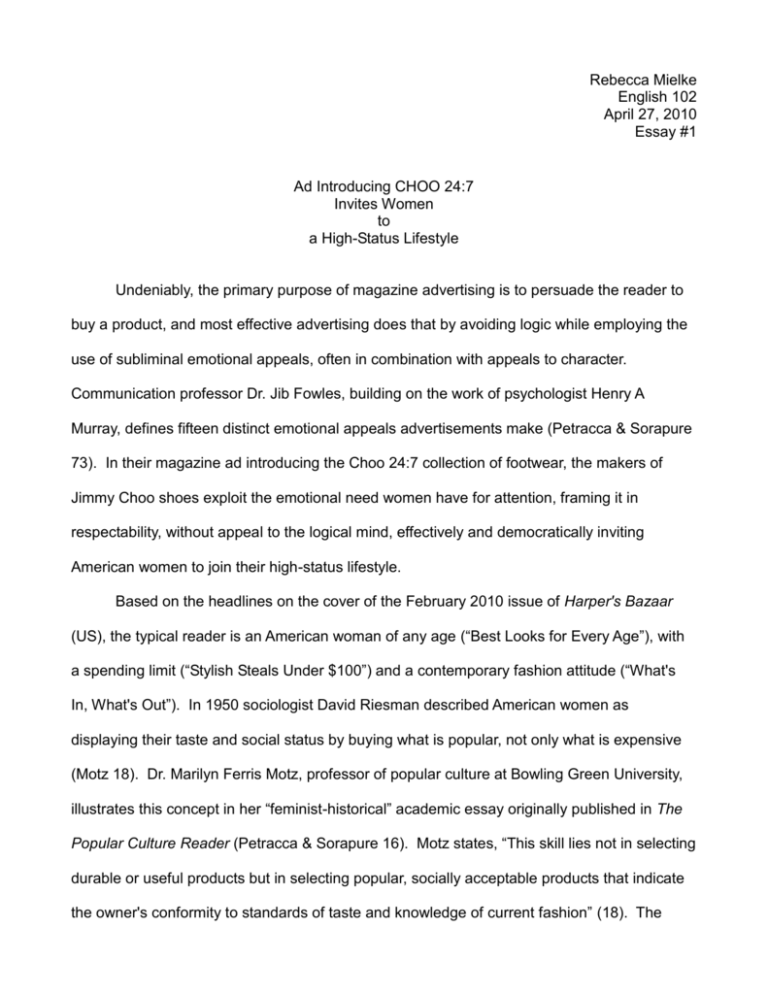
Rebecca Mielke English 102 April 27, 2010 Essay #1 Ad Introducing CHOO 24:7 Invites Women to a High-Status Lifestyle Undeniably, the primary purpose of magazine advertising is to persuade the reader to buy a product, and most effective advertising does that by avoiding logic while employing the use of subliminal emotional appeals, often in combination with appeals to character. Communication professor Dr. Jib Fowles, building on the work of psychologist Henry A Murray, defines fifteen distinct emotional appeals advertisements make (Petracca & Sorapure 73). In their magazine ad introducing the Choo 24:7 collection of footwear, the makers of Jimmy Choo shoes exploit the emotional need women have for attention, framing it in respectability, without appeal to the logical mind, effectively and democratically inviting American women to join their high-status lifestyle. Based on the headlines on the cover of the February 2010 issue of Harper's Bazaar (US), the typical reader is an American woman of any age (“Best Looks for Every Age”), with a spending limit (“Stylish Steals Under $100”) and a contemporary fashion attitude (“What's In, What's Out”). In 1950 sociologist David Riesman described American women as displaying their taste and social status by buying what is popular, not only what is expensive (Motz 18). Dr. Marilyn Ferris Motz, professor of popular culture at Bowling Green University, illustrates this concept in her “feminist-historical” academic essay originally published in The Popular Culture Reader (Petracca & Sorapure 16). Motz states, “This skill lies not in selecting durable or useful products but in selecting popular, socially acceptable products that indicate the owner's conformity to standards of taste and knowledge of current fashion” (18). The typical Harper's Bazaar reader has internalized this ambition and Jimmy Choo takes advantage of a reputation for high fashion footwear in presenting its ad in this publication. As explained by Jimmy Choo founder and president Tamara Mellon in a video on the Jimmy Choo website, The Choo 24:7 concept is to take best-selling ready-to-wear styles from Jimmy Choo, who produces some of the most coveted shoes in America, and make them widely available in updated fabrics and finishes. If a woman has a favorite Jimmy Choo shoe style from a previous season, she can now buy another pair in a new color to go with her wardrobe for the current season (Mellon). The consumer has the reassurance of predictability, style, and ease of shopping. Thus, the line seemingly targets the established Jimmy Choo customer. However, the ad introducing the Choo 24:7 collection appears to invite a broader segment of American women. What exactly is the reader being invited to? Apparently, as demonstrated by the nine different images of a woman's legs and feet, she can live an independent, high-status, urban lifestyle and be the center of attention. The price of admission? $415 to $1295 for a pair of Jimmy Choos (Jimmy Choo). By not mentioning the price of the shoes or any other factual information, the ad avoids using logos (appeal to logic). Careful observation reveals pathos (appeal to emotion) in the plot. The plot, or action pictured in the ad, depicts an attractive woman wearing diverse outfits featuring elegant footwear. Actually, it is not entirely obvious that the woman pictured is attractive, since we never see her face, only legs and feet. As in many clothing and cosmetic ads aimed at women, the primary emotional appeal is to a woman's lust to be looked at (Fowles 83). Presumably, in Jimmy Choos her legs will look longer, her feet will look more elegant, and certainly she will need to wear clothes that display them. On first glance, a man may wonder if the woman pictured needs physical therapy, since she appears pidgeon-toed and awkward in several of the photos. Women recognize the stance as edgy and high fashion. A woman initially may wonder why all the shoes, excepting a single pair, are high heels. Indeed, the collection offers other flat and lowerheeled options (Jimmy Choo). But high heels elongate and draw attention to the legs, further exploiting the reader's emotion need for attention. The lone pair of flats pictured, metallic glitter pumps, lend an impression of high-status leisure. Ethos (appeal to character) is evident in the spatiality, how the photos are set on the page, and in the text. Aesthetically, the formal balance and the white band containing the text placed precisely on the Golden Mean, a position located approximately 10% off dead center, contribute to the air of respectability. The appearance of the text, including the font and center-justification, is almost as that of a formal invitation to a wedding or some other lovely event. The actual wording of the “invitation” reads: Introducing JIMMY CHOO, Choo 24:7 The Collection. Featuring the name of Jimmy Choo prominently lends his authority. In addition, the use of white for the setting implies purity and the vertical line movement in the font and between the photos suggest strength. Finally, the use of a high contrast color scheme in the printed word also conveys authority. A general ambiance of sophistication is achieved through the use of neutral colors, urban street scenes, trendy clothing, and the use of metallic and bright accents. Significantly absent are all pastoral elements: no grass, no sky, and no animals. Animal print is visible in some of the shoes, but nothing living is pictured other than the legs of the lone woman in each picture, and some distant human figures. In addition to sophistication, a feeling of activity is created by the use of diagonal lines and simply by the fact that the focus is on the feet. Showing varieties of action and modes of dress allows women of various ages and income levels to relate. Setting the images on the page in geometric “photo-sheet” fashion, reminiscent of sheets of school photographs, connects the images with an experience familiar to most Americans. Who the woman pictured is supposed to be remains shrouded in ambiguity. Are all the pictures of the same woman? Are they various women: socialite, student, streetwalker, and so on? With no face shown, the reader may more readily insert herself into the picture. Although the Jimmy Choo company may have alienated some by failing to picture various ethnicities, or through the preponderance of high heels pictured, or by featuring two pairs of harem pants; overall the ad succeeds in simultaneously projecting status and inclusion. In the past, readers of Harper's Bazaar may have heard of Jimmy Choo shoes in reports of what celebrities wore, but the images in this ad bring the shoes closer to everyday American urban existence and put the reader into the shoes. Status, attention, and confidence all can be hers in a shoe box. Works Cited Fowles, Jib. “Advertising's Fifteen Basic Appeals”. Common Culture. Eds. Michael Petracca and Madeleine Sorapure. 5th ed. Upper Saddle River, New Jersey: Pearson, 2007. 73-90. Print. JIMMY CHOO. Advertisement. Harper's Bazaar (US) February 2010: 65. Print. JIMMY CHOO. Web April 2010. Mellon, Tamara. “House of Jimmy Choo”. Jimmy Choo. Web April 2010. Motz, Marilyn Ferris. “Seen Through Rose-Tinted Glasses”: The Barbie Doll in American Society. Common Culture. Eds. Michael Petracca and Madeleine Sorapure. 5th ed. Upper Saddle River, New Jersey: Pearson, 2007. 16-21. Print. Petracca, Michael and Madeleine Sorapure. Eds. Common Culture. 5th ed. Upper Saddle River, New Jersey: Pearson 2007. 16, 73. Print.

